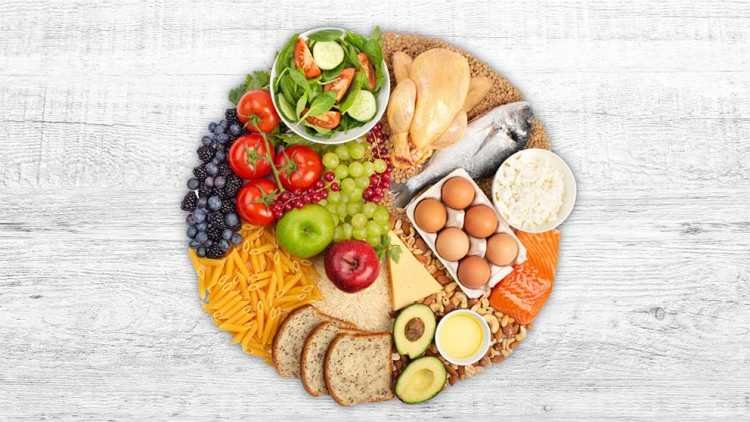Incorporating more fruits and vegetables into your diet is a great way to improve your health. Eating a variety of fruits and veggies can boost your energy, enhance your mood, and lower your risk of chronic diseases. However, many people find it challenging to eat enough of them daily. Fortunately, there are plenty of simple and delicious ways to add more produce to your meals. Here are some practical tips to help you easily incorporate more fruits and vegetables into your diet.
Start with Your Favorite Fruits and Vegetables
When thinking about incorporating more fruits and vegetables into your diet, it’s essential to start with what you love. Make a list of your favorite fruits and veggies and look for ways to include them in your meals. For example, if you enjoy bananas, add them to your morning cereal or smoothies. If you love carrots, try snacking on them with hummus. Focusing on what you already like will make it easier to include more produce in your diet.

Add Fruits and Vegetables to Every Meal
One effective strategy for incorporating more fruits and vegetables into your diet is to add them to every meal. In the morning, toss some berries into your yogurt or oatmeal. At lunch, include a side salad or add spinach to your sandwich. For dinner, try adding steamed broccoli or roasted vegetables to your main dish. By making it a habit to include produce in every meal, you’ll naturally increase your intake without feeling overwhelmed.
Snack on Fruits and Vegetables
Snacking is another excellent opportunity for incorporating more fruits and vegetables into your diet. Instead of reaching for chips or cookies, keep fresh fruits and veggies on hand for quick snacks. For example, keep apple slices, baby carrots, or cherry tomatoes readily available in the fridge. You can also prepare some healthy dips, like guacamole or tzatziki, to make your snacks even more enjoyable.
Experiment with New Recipes
To incorporate more fruits and vegetables into your diet, try experimenting with new recipes. Look for dishes that highlight produce as the main ingredient. For example, you might try making a vegetable stir-fry, a fruit salad, or a smoothie packed with greens. Don’t be afraid to get creative! Trying new flavors and cooking methods can help you discover new favorites and keep your meals exciting.
Make Smoothies and Juices
Smoothies and juices are fantastic ways to increase your fruit and vegetable intake. You can blend a variety of fruits and vegetables into a delicious drink that’s both nutritious and refreshing. Consider adding spinach, kale, or carrots to your smoothie for extra nutrients. This method is not only quick but also an excellent way to consume a variety of produce in one sitting.
Cook Extra Vegetables
When cooking, consider preparing extra vegetables to use throughout the week. For instance, if you’re roasting vegetables for dinner, make a larger batch. You can store the leftovers in the fridge and use them in salads, omelets, or wraps over the next few days. This approach makes it easy to incorporate more fruits and vegetables into your diet without additional cooking.
Keep Fruits and Vegetables Visible
Keeping fruits and vegetables visible can encourage you to eat more of them. Place a bowl of fresh fruit on your kitchen counter or table where you can see it easily. When fruits and veggies are in plain sight, you are more likely to grab them for snacks or add them to meals. This simple change can significantly impact your daily intake of produce.
Incorporate Frozen Fruits and Vegetables
Frozen fruits and vegetables are convenient and nutritious options for incorporating more produce into your diet. They are often picked at peak ripeness and flash-frozen, retaining their nutrients. Keep a variety of frozen fruits and vegetables on hand for quick meal additions. You can easily toss frozen spinach into soups or blend frozen berries into smoothies. This way, you always have healthy options available.
Join a Community Supported Agriculture (CSA) Program
Consider joining a Community Supported Agriculture (CSA) program to get fresh fruits and vegetables regularly. By subscribing to a CSA, you’ll receive a weekly box of seasonal produce from local farmers. This can help you try new fruits and vegetables you might not usually purchase. Plus, it supports local agriculture and promotes eating fresh, in-season produce.
Set Realistic Goals
Finally, set realistic goals for incorporating more fruits and vegetables into your diet. Start with small, achievable targets, such as adding one extra serving of produce to your meals each day. Gradually increase your intake as you become more comfortable. Tracking your progress can also motivate you to stay on track and make healthier choices.
Conclusion
Incorporating more fruits and vegetables into your diet can significantly improve your health and well-being. By starting with your favorites, adding produce to every meal, and exploring new recipes, you can easily increase your intake. Remember to keep fruits and vegetables visible, try frozen options, and set realistic goals. With these simple tips, you’ll be on your way to a healthier, more colorful diet.







